Early Emergent Literacy
Literacy begins at birth and builds on relationships and experiences that occur during infancy and early childhood. For example, introducing a child to books at an early age contributes to a later interest in reading. Reading together while he or she sits on your lap promotes bonding and feelings of trust. The give-and-take nature of babbling, lap games, songs, and rhymes set the stage for sharing favorite picture books. Exposure to logos, signs, letters, and words leads to the knowledge that symbols have meaning. The acquisition of skills such as looking, gesturing, recognizing and understanding pictures, handling books, and scribbling lay the groundwork for conventional reading and writing.
A love of books, of holding a book, turning its pages, looking at its pictures, and living its fascinating stories goes hand-in-hand with a love of learning. (Laura Bush, 2003)
Children with combined vision and hearing loss miss out on many of the experiences that happen incidentally for other children, but rich early learning experiences can be provided when families, teachers, and caregivers build trusting relationships with these children, know what their favorite objects and activities are, and recognize their array of communication signals.
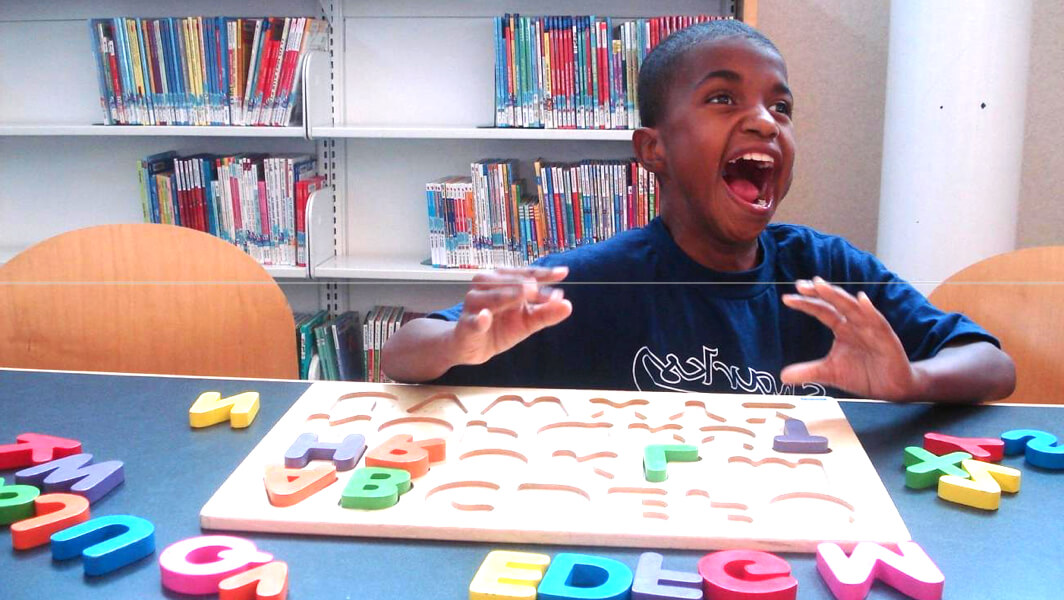
As you foster early literacy skills in a child who is deaf-blind, expect to see the child handling and exploring books and writing materials using all of his or her senses (sometimes in unconventional ways). Watch for the child to show signs of anticipation while playing turn-taking games or move in rhythm to songs and music you've listened to together. Allow children to get "up close and personal" to reading and writing items around the house. Point out and talk about signs, symbols, and words you see at school, day care, the grocery store, and out in the community.
It takes intentional planning to provide meaningful early learning experiences on which to build literacy skills. Following a child's lead provides a wealth of information about what will be most interesting and motivating to a particular child. Incorporating familiar and favorite objects, people, and activities into early learning experiences is essential to achieving positive results.
Related Skills
Literacy skills should not be taught in isolation because they relate to numerous developmental and academic standards often being addressed by a child's educational team. Awareness of interrelated skills assists teams in IEP development and planning holistic instruction.
Attention and Response
Joint attention; response to people, objects, familiar sound/rhythm/movement; response to communication and/or literacy partner; attention/response to informational cues; attention/response to literacy activities
Interaction and Communication
Anticipation; turn-taking; use of pre-linguistic forms of communication (touch, object, gestures and/or cues; ability to access communication and/or literacy partner; active engagement with communication and/or literacy partner; full/partial participation in instructional activities
Sensory
Use of other sensory skills such as smell, taste, movement to gather information; localization to presented sounds; auditory discrimination; visual fixation; eye gaze
Tactile/Motor
Exploration of items using touch; imitation of simple motor tasks; reaches or scans to search for an object; picking up objects; holding objects; pincer grasp; tactile discrimination; eye-hand coordination
Cognitive
Object permanence; one-to-one correspondence; spatial and positional concepts such as front/back, top/bottom; use of emergent symbolic forms (e.g., pictures and/or line drawings)
Examples
Everyday activities link to literacy
Examples of different ways to use exploration with children.
Using object cues as part of daily routines
Examples of cues used to communicate.
Label Objects
Develop print awareness by labeling objects with both pictures and words. You might also add braille.
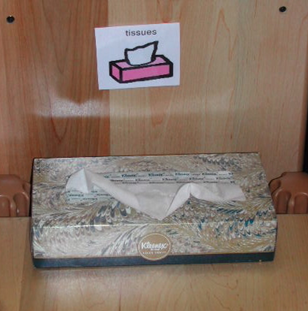
Recipe
Using an object recipe embeds literacy into daily living skills instruction.
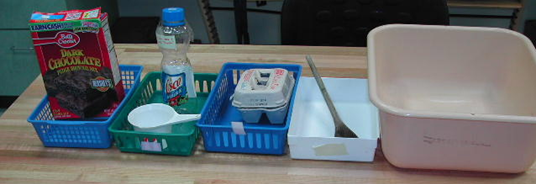
Work on literacy while making choices
This communication flip chart combines pictures and words with colors and contrast customized to the child's needs and interests. Pairing pictures with print sets the stage for moving to print by fading the pictures.
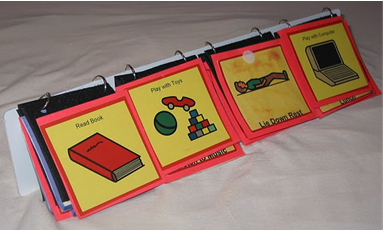
Work on literacy while playing a game
An adapted game of Cootie is a great way to work on matching objects to pictures and putting together/taking apart. These are skills that help children learn that words represent objects, figure out new words and form sentences.
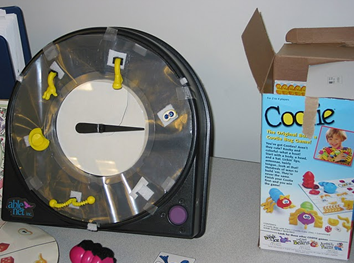
Video Clips
Literacy and Deaf-Blindness
Introduction to a variety of techniques for creating/adapting books and literacy activities to make them interesting and relevant to students with deaf-blindness.
Handling Books
This typically developing eight-month-old is shown handling a book. She has been read to every day of her life. Notice that there are toys around her, but she is more interested in her book. Children with significant disabilities are not often given the opportunity to handle books, which is a very important component of literacy.
Early Literacy for Students with Multiple Disabilities or Deafblindness
Webcast that includes an introduction to literacy, challenges related to literacy for this population, literacy learning activities and adapted books.
Tangible Symbols
Webcast explaining what tangible symbols are and how they can be used to support communication development in children who are unable to use abstract symbols.
Experience Books
Overview, videos, and FAQs from Washington Sensory Disabilities Services on experience books and how to use them to encourage literacy for children with deaf-blindness and/or multiple disabilities.
Articles
Literacy for Persons Who Are Deaf-Blind
Introduction to an expanded view of literacy, written in everyday language and including a variety of practical tips.
Calendar Systems for Young Children with Sensory Impairments
Discusses the developmental considerations connected to creating a meaningful calendar system and strategies for preparing a young child to use one.
Tangible Symbols Systems Primer
Provides basic information about the use of tangible symbol systems, including practical examples, tips from the field and troubleshooting suggestions.
The Path to Symbolism
Easy-to-read overview of how children with significant learning challenges, including deaf-blindness move from early forms of intentional communication to more abstract forms requiring the use of symbols.
Additional Resources
Center for Early Literacy (CELL)
Overview of the CELL approach to early literacy learning in home and classroom settings (Literacy-rich environments, Child interests, Everyday literacy activities, and Responsive teaching).
Every Child Is a Potential Reader
Introduction to the importance of literacy for all children with examples of literacy materials and activities including story boxes, literacy kits and assistive technology. (Begins on page 6)
Calendars for Students with Multiple Impairments Including Deafblindness
Written for students who need help structuring and organizing their time and activities through the use of an individualized system. Available for purchase.
Tactile Symbols Directory
A directory of tactile symbols used at the Texas School for the Blind and Visually Impaired.
